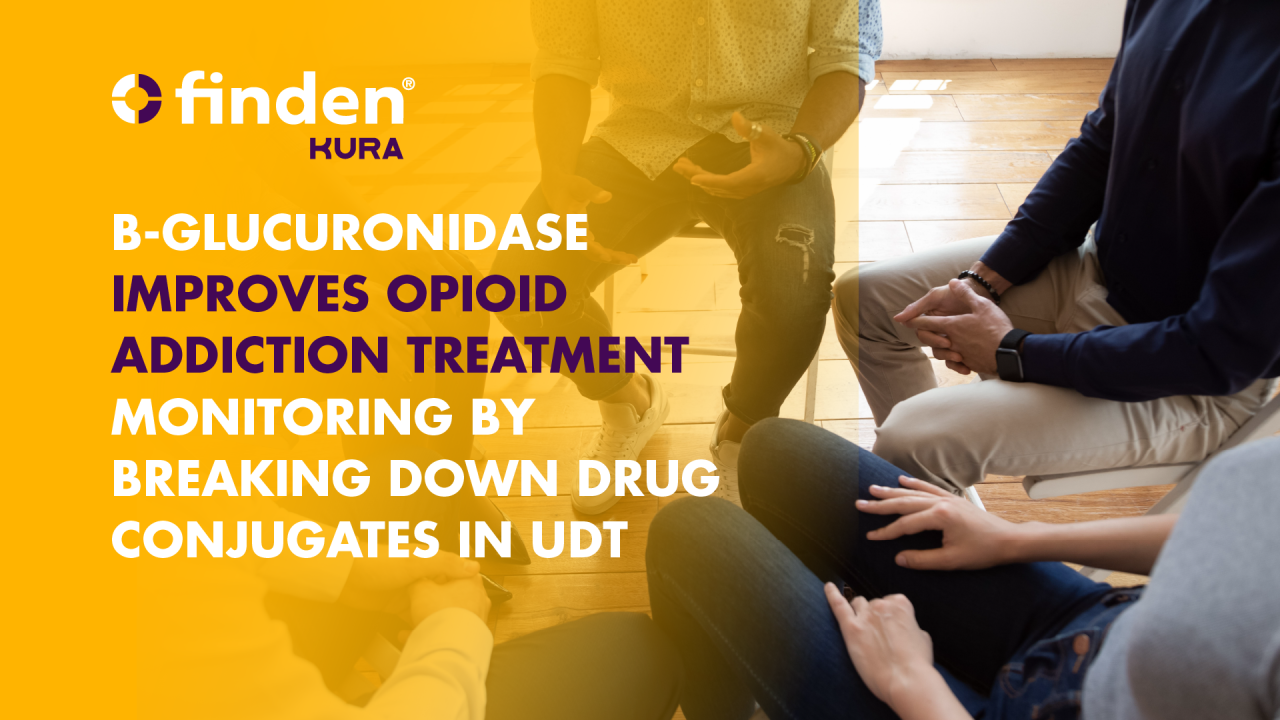Enhancing Opioid Addiction Treatment through Urine Drug Testing
UDT crucial for opioid addiction treatment, highlighting Finden enzymes' potential in enhancing monitoring accuracy.
Effectively managing opioid addiction has become an essential challenge. Urine drug testing (UDT) has emerged as a pivotal tool in monitoring patients undergoing opioid addiction treatment, providing crucial insights to healthcare providers to ensure compliance with prescribed regimens and mitigate abuse or diversion of substances. This article synthesizes and integrates insights from significant studies, to shed comprehensive light on the clinical utility, benefits, and challenges of employing UDT in managing opioid addiction.
A significant exploration into UDT utilization among patients on long-term opioid therapy (LTOT) for chronic pain, revealed a concerning inconsistency in adherence to national guidelines recommending periodic UDT. Analyzing a diverse patient population of 5,690 patients under LTOT care from 689 clinicians across primary care and specialty clinics, the study unearthed intriguing correlations between patient demographics and UDT frequencies. Notably, it showed that only 39.6% of patients had undergone UDT, implying a pressing need for more standardized and evidence-based UDT utilization.
The research also underscored a plausible connection between testing and the volume of opioid prescriptions, with patients receiving a higher number of opioid prescriptions more likely to undergo UDT. Furthermore, prescriber-related factors significantly influenced UDT rates, emphasizing the role of the prescriber's demographics and specialty in compliance with recommended testing procedures.
The critical role of definitive UDT in office-based opioid treatment (OBOT), offers valuable insights into the accuracy and potential enhancements of patient care through UDT. The review emphasized the necessity for ongoing research to optimize contingency management (CM) interventions and highlighted the significance of prudent analyte selection in ensuring patient safety and effective substance use monitoring. By emphasizing the importance of definitive UDT, this review accentuated the need for accurate and comprehensive insights into patient responses to opioid therapy.
UDT outcomes among individuals with opioid use disorder (OUD) undergoing buprenorphine-naloxone treatment in a primary care spoke program were reviewed in 2021. Analyzing data from 161 patients and 2,588 urine tests, the research provided valuable insights into optimizing UDT practices. It showcased the low incidence of unexpected UDT results, suggesting that less frequent testing might be reasonable for certain stable patients within this context. This finding could revolutionize testing practices, minimizing patient discomfort and streamlining healthcare resources.
The combination of insights from these critical studies underscores the indispensable role of UDT in opioid addiction treatment. By providing healthcare providers with critical information for effective patient monitoring and ensuring compliance with prescribed regimens, UDT emerges as an essential tool in modern medicine's battle against opioid addiction. This comprehensive review underscores the value of UDT in safe opioid prescribing and monitoring, emphasizing the need for comprehensive knowledge among healthcare providers to deliver fair and unbiased care for all patients. As the debate surrounding the role and utility of UDT continues, further research and comprehensive assessment are imperative to guide its appropriate and evidence-based integration into clinical practice. Leveraging the full potential of UDT is essential to optimize opioid addiction treatment and effectively combat the opioid crisis.
In the world of UDT methodologies, the use of B-glucuronidase stands out as a critical enzymatic approach. B-glucuronidase is an enzyme utilized to hydrolyze glucuronide conjugates present in urine samples, facilitating the extraction and subsequent analysis of drug concentrations. This enzymatic hydrolysis step is vital for releasing the parent drug and its metabolites from their glucuronide conjugates, enabling accurate quantification of drug concentrations in urine. B-glucuronidase played a crucial role in preparing urine samples for analysis, enhancing the accuracy and reliability of the subsequent UDT process. By enzymatically breaking down glucuronide conjugates, B-glucuronidase ensures a thorough and precise assessment of drug presence and concentrations, contributing to the effectiveness of UDT in monitoring opioid addiction treatment.
KURA Biotech's pioneering work on Finden enzymes has demonstrated remarkable efficacy, offering a potential tool for developing advanced methods for UDT to monitor opioid addiction. By utilizing B-One, researchers and clinicians can enhance the enzymatic hydrolysis of glucuronide conjugates. This optimization ensures a more precise and comprehensive evaluation of drug concentrations in urine samples, ultimately bolstering the effectiveness and reliability of monitoring approaches in opioid addiction treatment.



